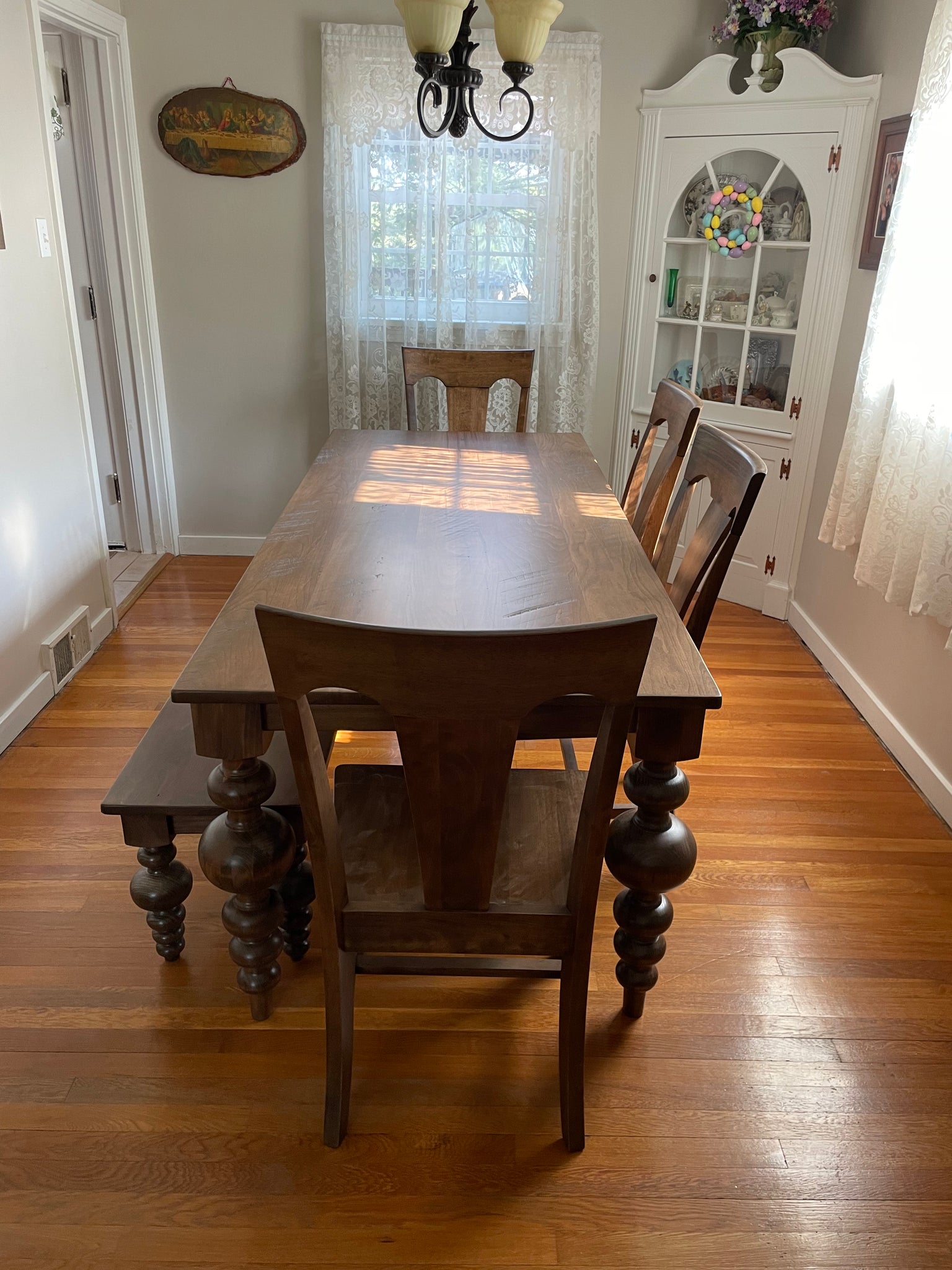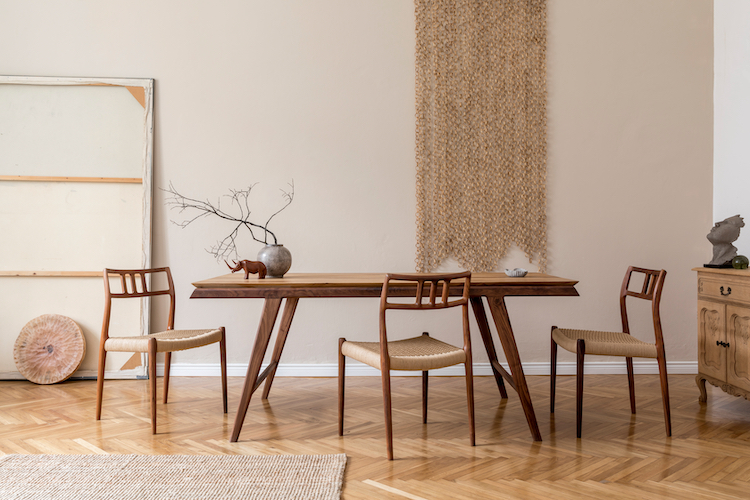Why Custom Dining Room Table Legs Are Worth the Investment
From Traditional to Modern: Locate the Perfect Dining Area Table Legs for Your Style
While classic styles such as cabriole and transformed legs stimulate a sense of classic sophistication, contemporary designs like barrette and geometric options provide a possibility for striking aesthetic interest. As you consider these components, the question remains: exactly how can you flawlessly integrate these diverse leg styles to produce an unified dining experience?
Recognizing Table Leg Styles
The range of dining-room table leg designs can significantly influence both the aesthetics and functionality of the room. Each leg style contributes distinct useful attributes and aesthetic elements, accommodating diverse layout choices and use requirements. Understanding these styles is essential for choosing the ideal table that aligns with your overall indoor layout vision.
For instance, tapered legs offer a tidy, traditional look that can enhance a space's elegance, while stand bases give stability and maximize legroom, making them excellent for smaller sized areas. Hairpin legs, a characteristic of mid-century modern-day style, introduce an industrial flair, permitting an airy, open feel. Likewise, trestle legs evoke rustic beauty, supplying durable support and a feeling of eternity.
Additionally, the selection of products plays a considerable duty. Wooden legs can bring heat and structure, whereas steel options frequently share a smooth, contemporary ambiance. Eventually, comprehending table leg styles is necessary for producing a cohesive dining location that reflects individual style while guaranteeing usefulness and comfort. By attentively considering these elements, you can boost both the aesthetic and practical appeal of your eating space.
Typical Table Leg Options
When picking dining space table legs, conventional alternatives commonly personify timeless beauty and craftsmanship. These designs mirror an abundant heritage and a commitment to high quality, making them optimal for those that appreciate traditional appearances.
One of the most famous conventional leg styles is the cabriole leg, defined by its stylish rounded form. This layout typically features decorative carvings and is most commonly discovered in Queen Anne and Chippendale furnishings. An additional popular option is the turned leg, which boasts a series of smooth, rounded shapes that offer a classic look while keeping stability.
Furthermore, the straight leg, while easy, provides a unadorned and sturdy structure that can mix flawlessly with a selection of tabletop styles. For those drawn to ornate detailing, claw-and-ball feet legs stimulate a feeling of magnificence and can work as a sensational prime focus in any eating space.
Last but not least, pedestal bases, although not purely legs, supply a different standard choice that enables for sufficient legroom and can be wonderfully sculpted. Each of these typical leg designs adds to the general ambiance of a dining-room, marrying feature with aesthetic allure.

Modern Table Leg Designs
Modern table leg designs supply a varied series of styles that stress Click Here clean lines and innovative products. These layouts usually prioritize functionality while functioning as striking prime focus within an eating space. Minimal aesthetic appeals prevail, with legs crafted from materials such as steel, glass, and crafted wood, which add to a airy and contemporary feel.
One preferred style is the hairpin leg, defined by its slim, tapered framework that gives stability without overwhelming the table top (dining room table legs). This style is often discovered in mid-century modern-day furniture and can effortlessly match various table forms. One more pattern is making use of geometric forms, where legs may handle angular or unbalanced forms, adding visual rate of interest and a touch of virtuosity

Blending Styles for Special Areas
Usually, homeowners look for to develop distinct dining areas that reflect their personal style by blending various layout components. This technique permits the consolidation of diverse visual appeals, resulting in a harmonious yet distinctive atmosphere. As an example, combining a rustic wooden table with streamlined, contemporary metal legs can produce an attractive contrast that boosts the room's general appeal.
In addition, incorporating vintage table legs with contemporary tabletops can evoke a feeling of history while maintaining see page a modern perceptiveness. Such combinations not just showcase private preference but also encourage imagination, allowing homeowners to curate a space that feels both individual and welcoming.
Shade plays an essential function in this blending process; selecting table legs that match or contrast with the existing color scheme can improve visual passion. Whitewashed legs can soften the daring of a dark table surface area, developing a well balanced aesthetic.
Tips for Picking the Right Legs
Selecting the right table legs is necessary for achieving both capability and visual appeal in your dining area. Begin by thinking about the general design of your room. Traditional settings take advantage of legs that include intricate makings or transformed designs, while contemporary areas might ask for sleek, minimalist designs.
Next, examine the elevation and security of the legs. dining room table legs. Basic table vary between 28 to 30 inches in height, so make certain the legs complement click here for more this measurement for convenience. Furthermore, robust products, such as wood or metal, can boost stability and durability
Examine the leg form also-- choices include directly, tapered, or stand layouts. Straight legs offer a timeless look, while conical legs can add a touch of style. Pedestal bases provide enough legroom and are excellent for smaller sized areas.
Conclusion
In summary, choosing the perfect dining space table legs needs mindful consideration of both standard and contemporary designs. By harmonizing leg style, elevation, and product with the total decor, a cohesive and inviting environment can be achieved.
The variety of eating room table leg styles can substantially affect both the aesthetics and functionality of the room. Eventually, comprehending table leg designs is crucial for developing a cohesive dining location that reflects personal style while making sure usefulness and comfort.One of the most famous standard leg designs is the cabriole leg, identified by its graceful curved shape. Straight legs supply a traditional appearance, while conical legs can add a touch of elegance.In recap, choosing the ideal eating area table legs requires mindful factor to consider of both conventional and contemporary designs.